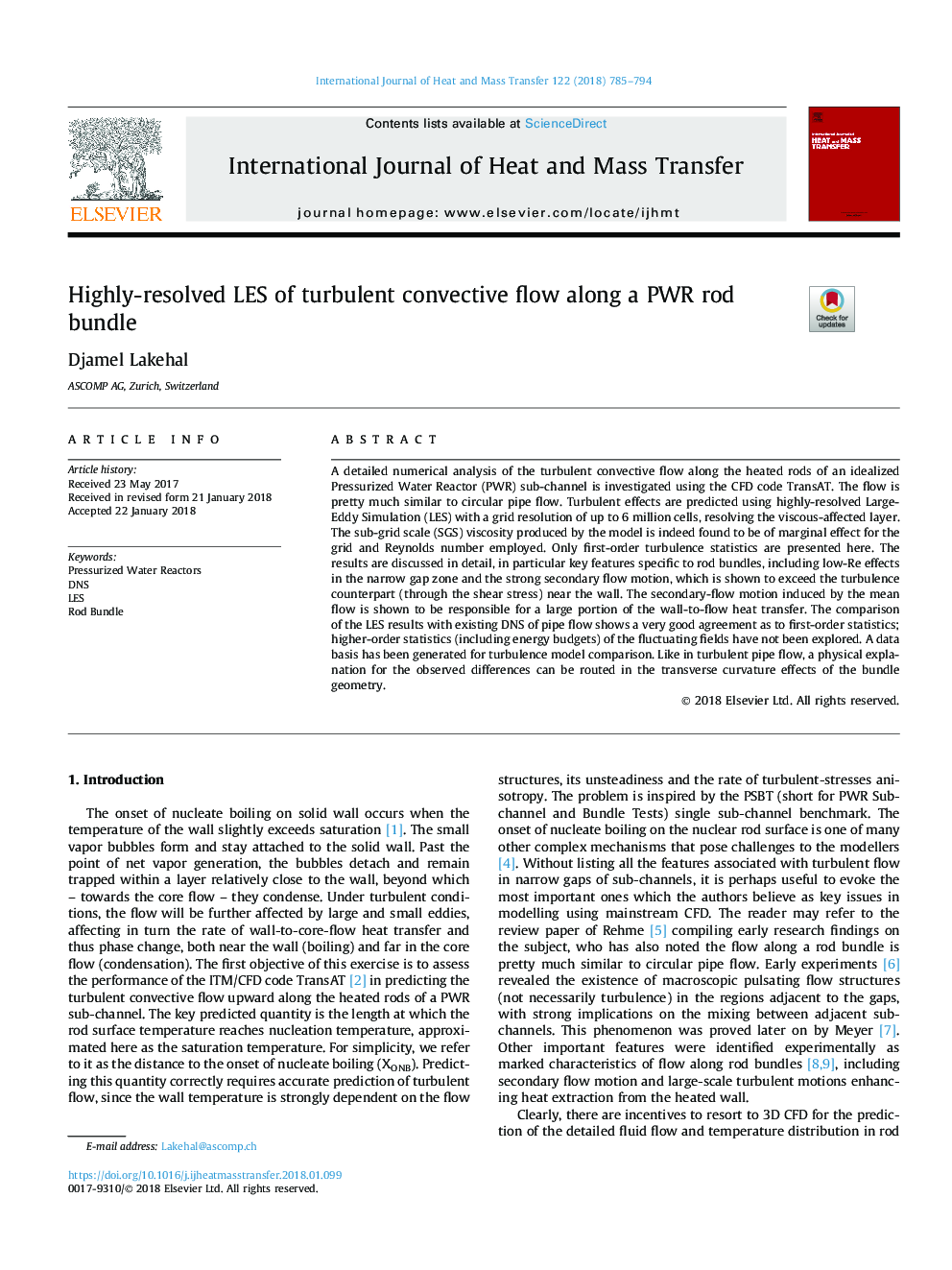| Article ID | Journal | Published Year | Pages | File Type |
|---|---|---|---|---|
| 7054419 | International Journal of Heat and Mass Transfer | 2018 | 10 Pages |
Abstract
A detailed numerical analysis of the turbulent convective flow along the heated rods of an idealized Pressurized Water Reactor (PWR) sub-channel is investigated using the CFD code TransAT. The flow is pretty much similar to circular pipe flow. Turbulent effects are predicted using highly-resolved Large-Eddy Simulation (LES) with a grid resolution of up to 6 million cells, resolving the viscous-affected layer. The sub-grid scale (SGS) viscosity produced by the model is indeed found to be of marginal effect for the grid and Reynolds number employed. Only first-order turbulence statistics are presented here. The results are discussed in detail, in particular key features specific to rod bundles, including low-Re effects in the narrow gap zone and the strong secondary flow motion, which is shown to exceed the turbulence counterpart (through the shear stress) near the wall. The secondary-flow motion induced by the mean flow is shown to be responsible for a large portion of the wall-to-flow heat transfer. The comparison of the LES results with existing DNS of pipe flow shows a very good agreement as to first-order statistics; higher-order statistics (including energy budgets) of the fluctuating fields have not been explored. A data basis has been generated for turbulence model comparison. Like in turbulent pipe flow, a physical explanation for the observed differences can be routed in the transverse curvature effects of the bundle geometry.
Related Topics
Physical Sciences and Engineering
Chemical Engineering
Fluid Flow and Transfer Processes
Authors
Djamel Lakehal,
